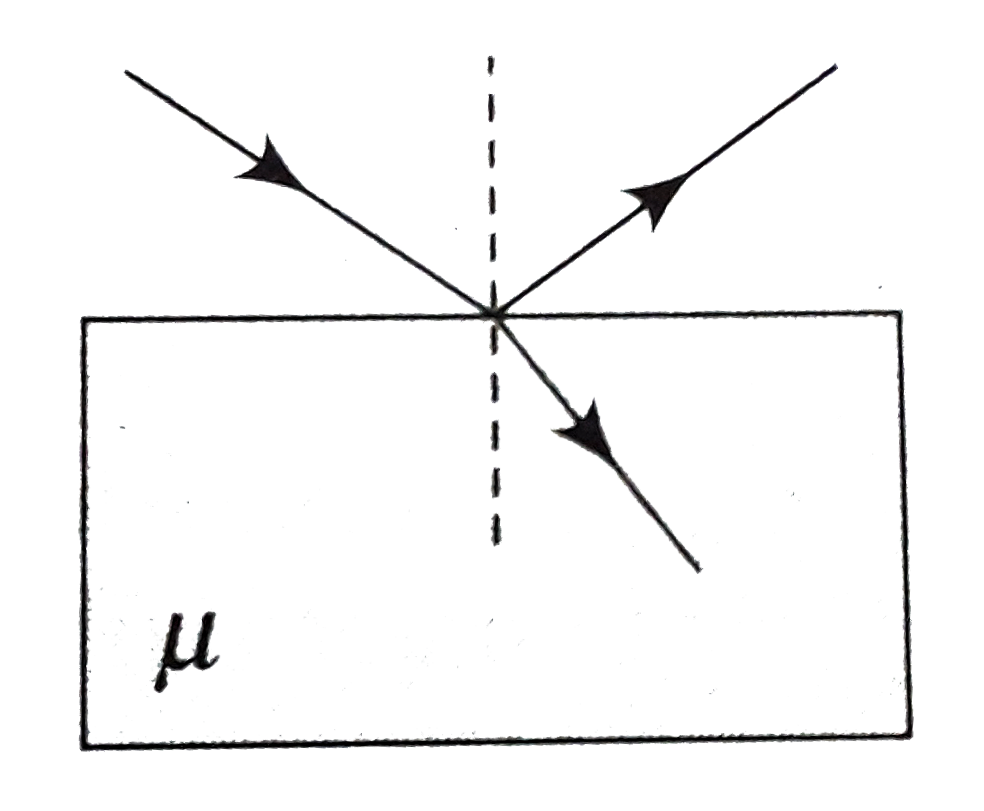Angle of incidence is equal to the angle of reflection.
Always
Sometimes
Under special condition
Never
The correct Answer is:A
Step by step video, text & image solution for Angle of incidence is equal to the angle of reflection. by Physics experts to help you in doubts & scoring excellent marks in Class 8 exams.
Topper's Solved these Questions
- BOOK - PEARSON IIT JEE FOUNDATIONCHAPTER - LIGHTEXERCISE - CLASSROOM CORNER (A. Very Short Answer Type Questions) (Comprehension-Based Questions)4videos
LIGHT
- BOOK - PEARSON IIT JEE FOUNDATIONCHAPTER - LIGHTEXERCISE - CLASSROOM CORNER (A. Very Short Answer Type Questions) ( Subjective Type Questions )13videos
LIGHT
- BOOK - PEARSON IIT JEE FOUNDATIONCHAPTER - LIGHTEXERCISE - HOTS - HIGHER ORDER THINKING SKILLS7videos
LIGHT
- BOOK - PEARSON IIT JEE FOUNDATIONCHAPTER - KINEMATICS EXERCISE - CONCEPT APPLICATION (Level 3) (Application Based Questions )5videos
KINEMATICS
- BOOK - PEARSON IIT JEE FOUNDATIONCHAPTER - MAGNETISM EXERCISE - CONCEPT APPLICATION (Level 3)4videos
MAGNETISM
Similar Questions
In which case will the angle of incidence be equal to the angle of refraction?
View SolutionA light ray strikes a reflective plane surface at an angle of 30∘ with the plane surface.
(i) Find the angle of incidence. (ii) Find the angle of reflection. (iii) Find the angle of between the incident and the reflected ray. (iv) Find the angle between the reflected ray and the plane surface.View Solution
Knowledge Check
- Question 1 - Select One
A ray of light is incident on a plane mirror, making an angle 'q' with the surface of the mirror. Arrange the following steps in sequential order to calculate the angle between the incident light ray and the reflected light ray.
(A) Draw a normal line on the plane mirror at the point of incidence of the light ray.
(B) Note down the angle between the plane mirror and the incident light ray.
(C) The sum of the angle of incidence and the angle between the plane mirror and the incident ray is 90∘.Determine the angle of incidence.
(D) From the laws of reflection, the angle of incidence is equal to the angle of reflection. Then the sum of the angle of incidence and the angle of reflection gives the angle between the incident light ray and the reflected light ray.ADACBBCDABCBACDDDBAC - Question 2 - Select One
A ray of light is incident on a plane mirror, making an angle 'q' with the surface of the mirror. Arrange the following steps in sequential order to calculate the angle between the incident light ray and the reflected light ray.
(A) Draw a normal line on the plane mirror at the point of incidence of the light ray.
(B) Note down the angle between the plane mirror and the incident light ray.
(C) The sum of the angle of incidence and the angle between the plane mirror and the incident ray is 90∘.Determine the angle of incidence.
(D) From the laws of reflection, the angle of incidence is equal to the angle of reflection. Then the sum of the angle of incidence and the angle of reflection gives the angle between the incident light ray and the reflected light ray.ADACBBCDABCBACDDDBAC - Question 3 - Select One
Statement I: A lighr ray is incident on a glass slab. Some portion of it is reflected and some is refracted. Reeefracted and reflected rays are always perpendicular to each other.
Statement II: Angle of incidence is equal to angle of reflection.
 AStatement is True, Statement II is True, Statement II is correct explanation for Statement IBStatement I is True, Statement II is True, Statement II is NOT a correct explanation for Statement I.CStatement I is True, Statement II is False.DStatement I is False, Statement II is True.
AStatement is True, Statement II is True, Statement II is correct explanation for Statement IBStatement I is True, Statement II is True, Statement II is NOT a correct explanation for Statement I.CStatement I is True, Statement II is False.DStatement I is False, Statement II is True.
A light ray incidents at an angle 'i' on a plane mirror and undergoes reflection. Arrange the following steps in sequential order to calculate the angle of deviation of the light ray.
(A) The angle between the incident ray and the extended light ray is 180∘ (B) In case of reflection, the angle of incidence (i) is equal to the angle of reflection (r). Then, the angle between the incident ray and the reflected ray is 2i. (C) Draw an imaginary line, extending the incident light ray, which represents the actual path of the light ray. (D) The angle of deviation is the angle between the reflected light ray and the actual path of the light ray, i.e., 180∘−2iView SolutionA light ray incidents at an angle 'l' on a plane mirror and undergoes reflection. Arrange the following steps in sequential order to calculate the angle of deviatino of the light ray.
The angle between the incident ray and the extended light ray is 180∘.
In case of reflection, the angle of incidence (i) is equal to the angle of reflection (r). Then the angle between the incident ray and the reflected ray is 2i.
Draw an imaginary line, extending the incident light ray, which reprsesnts the actual path of the light ray.
The angle of deviation is the angle between the reflected light ray and the actual path of the light ray, i.e., 180∘−2i.View SolutionThe angle of incidence is equal to angle of reflection is the statement of law of
View SolutionStatement-1 : A ray incident along normal to the mirror retraces its path.
Statement-2 : In reflection, angle of incidence is always equal to angle of reflectionView SolutionA ray of light passes through the equilateral prism such that angle of incidence is equal to the angle of emergence if the angle of incidence is 45∘. The angle of deviation will be
View Solution

